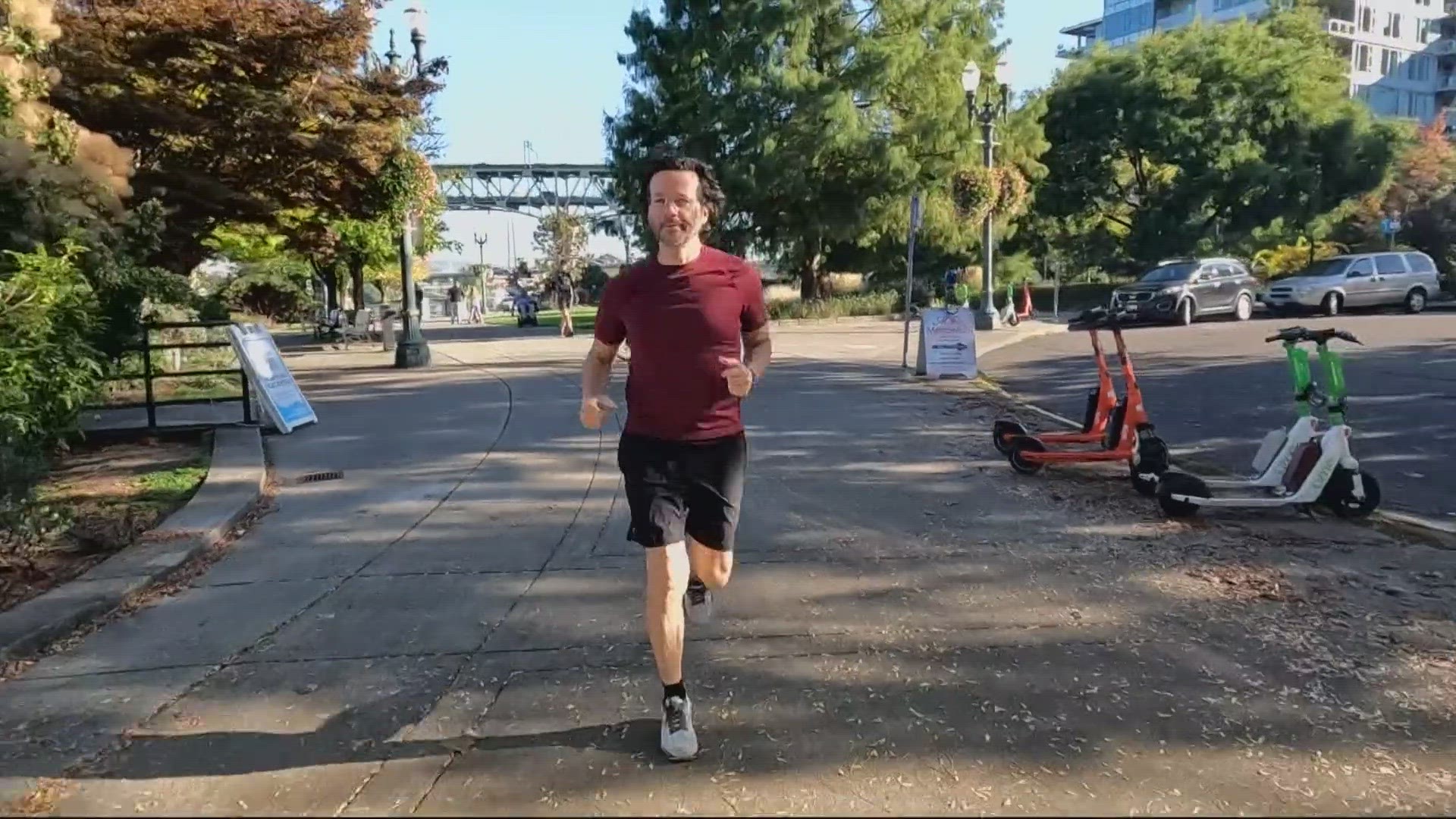PORTLAND, Ore. — Osteoarthritis in the knee affects millions of people, but one local man is back to his active outdoor lifestyle, thanks to a new technique to repair his knee.
Oregon Health and Science University is the first in the nation to use a leading-edge knee repair technique to treat osteoarthritis in the knee.
Despite the osteoarthritis in his knee, Thomas Proctor is hitting the pavement again. Running is a big part of his active lifestyle.
“I love to run,” Proctor said. “If I can’t run, I feel like I need a fix.”
He is getting back into his running routine, but it’s not a “new spring” in his step — it’s a shock absorber in his knee.
“It’s a pretty substantial thing to have an implant, but I think the worse option would be to never run again,” Proctor said.
The FDA just approved the technique in April. Proctor is the first to receive it commercially. It involves an implantable shock absorber that had him walking again in weeks. The process to get to this point, however, took much longer.
“We’ve been looking at this technology for more than a decade,” said OHSU orthopedic surgeon Dr. Dennis Crawford.
Crawford and OHSU were part of a series of clinical trials sponsored by Moximed, which produces the MISHA Knee System, to ensure its safety and efficacy.
“Over that time, I would meet people who had really end of their rope. You know, they couldn't do stuff. They were failing to stay healthy. They were failing to keep up with their work, their children,” Crawford said. “This is a disease that we don't want to necessarily wait to take care of until the end. You know, most things we like to take care of when we first notice them.”
The implant is about the size for a pinkie and is placed underneath the skin in a surgical procedure.
“I do explain it like a mountain bike shock for people because what it does is when we step, it takes that stress and dissipates it through the mechanics of this small device,” Crawford said. “Then, about 20 to 30 pounds of pressure are relieved from your joint. This can take patients from being miserable and unable to being quite capable.”
It’s an alternative to conventional knee replacement surgery. Crawford describes it as the first notable advancement in treating knee osteoarthritis in half a century.
It has the potential to help certain patients by intervening earlier on, which can allow patients to stay active, leading to better overall health outcomes.
“I think what this device and hopefully others and other therapeutics in this domain will do is start to say, ‘Hey, this is a disease that doesn't have to get to you yet; maybe we can affect it by keeping people healthy and active,’” Crawford said.
Now, this procedure won’t be right for everyone, and Crawford is realistic about insurance and other hurdles that come with a new treatment, but he’s excited about what is next. He hopes more patients will see the benefits Proctor has.
“I just wanted to get out and do stuff. So that was another part of the motivation,” Proctor said.
Now, Proctor is picking up pace and getting back to the active lifestyle he loves.
“I can just have my life back the way it was,” he said.

